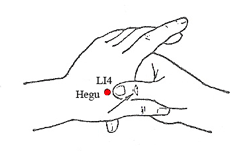 The journey through pregnancy to birth is quite intricate. From the minute the egg meets the sperm, a baby begins its developmental process. It is in this early stage of development that the foundation is laid for a healthy pregnancy, which results in the birth of a healthy baby. Unfortunately, since this early stage involves a complex process, things could go wrong and ultimately result in loss of the pregnancy. If your doctor suspects a complication in your early pregnancy stage, s/he will use an ultrasound and blood tests to make a clearer diagnosis. Ultrasounds are done to visually see the development process taking place in your uterus and also to measure the progress.
The journey through pregnancy to birth is quite intricate. From the minute the egg meets the sperm, a baby begins its developmental process. It is in this early stage of development that the foundation is laid for a healthy pregnancy, which results in the birth of a healthy baby. Unfortunately, since this early stage involves a complex process, things could go wrong and ultimately result in loss of the pregnancy. If your doctor suspects a complication in your early pregnancy stage, s/he will use an ultrasound and blood tests to make a clearer diagnosis. Ultrasounds are done to visually see the development process taking place in your uterus and also to measure the progress.
The earliest a heartbeat can be seen is when you are in your 5th week of pregnancy. This type of ultrasound is normally performed endovaginally. An endovaginal exam is not painful. Contrary to popular belief, it does not require you to have a full bladder.
Why Should I Have Ultrasound at 5 Weeks Pregnancy?
Some of the reasons why you should have an ultrasound when 5 weeks pregnant include:
- To detect any abnormalities.
- To confirm whether you are having one baby or more.
- To confirm whether the baby is growing normally. More so, if you are expecting twins or had a problematic pregnancy in the past.
- To show your placenta and baby’s positioning. For example, when your placenta in late pregnancy is low down, you may need to undergo a caesarean section.
- To check the size of the baby. You will also be able to know how far along you are in your pregnancy.
How Will the Ultrasound Be Done?
When preparing for your 5 week pregnant ultrasound, you may be asked not to urinate before the scan. Having a full bladder will push your womb up, thus giving it a much better picture.
You will lie on your back and the doctor or nurse will apply some lubricating gel on your abdomen. The doctor will then take a small device and pass it forward and backwards over your abdomen and high-frequency sound will be beamed through the abdomen to your womb. The sound is then reflected back and ultimately creates a picture shown on a TV screen.
If you find the image to be confusing, you can ask your doctor to explain it to you. It should be possible for your partner to join you during the ultrasound process and also take a picture of the same although it might cost you.
What Can I See on Ultrasound at 5 Weeks?
On your 5 weeks pregnant ultrasound, you should be able to see your gestational sac and the yolk sac which is always present when you are 5 weeks pregnant. If you are carrying fraternal twins, you will be able to see the yolk sac as well as the fetal poles in two separate sacs. However, if you are carrying identical twins, you will be able to see a single gestational sac and two yolk sacs and the embryo is about 1.25mm long.
The gestational sac is that black area, while the yolk sac is the small white circle you see at the sac’s upper left. The yolk sac is the source of nutrients for the fetus. In size, the gestational sac at five months is about 6 to 12 mm and while the embryo is present, you cannot see it as it is the size of a rice grain.
If your sonographer is experienced, s/he can detect the yolk sac via transvaginal ultrasound. This is when your gestational sac’s mean diameter is about 8mm to 10mm. Since the yolk sac is present, it means that it is an intrauterine pregnancy and ectopic pregnancy is automatically excluded. However, there are some rare cases where there is simultaneous extrauterine and intrauterine gestation.
At the implantation site, there are spaces or cavities known as lacunary structures. Embryonic poles are adjacent to the yolk sac and will soon show cardiac activity. The reason why an embryonic pole is located near a wall is that it has a short connecting stalk.
There are times where cardiac motion can be seen in a 2mm-3mm embryo when trans-vaginal ultrasonography is performed. This motion is invariably noticed when the embryo’s length is 5mm. At the end of the 5th week, the heart rate ranges to about 60 bpm to 90 bpm.
Check this video out to see an ultrasound at 5 weeks:






